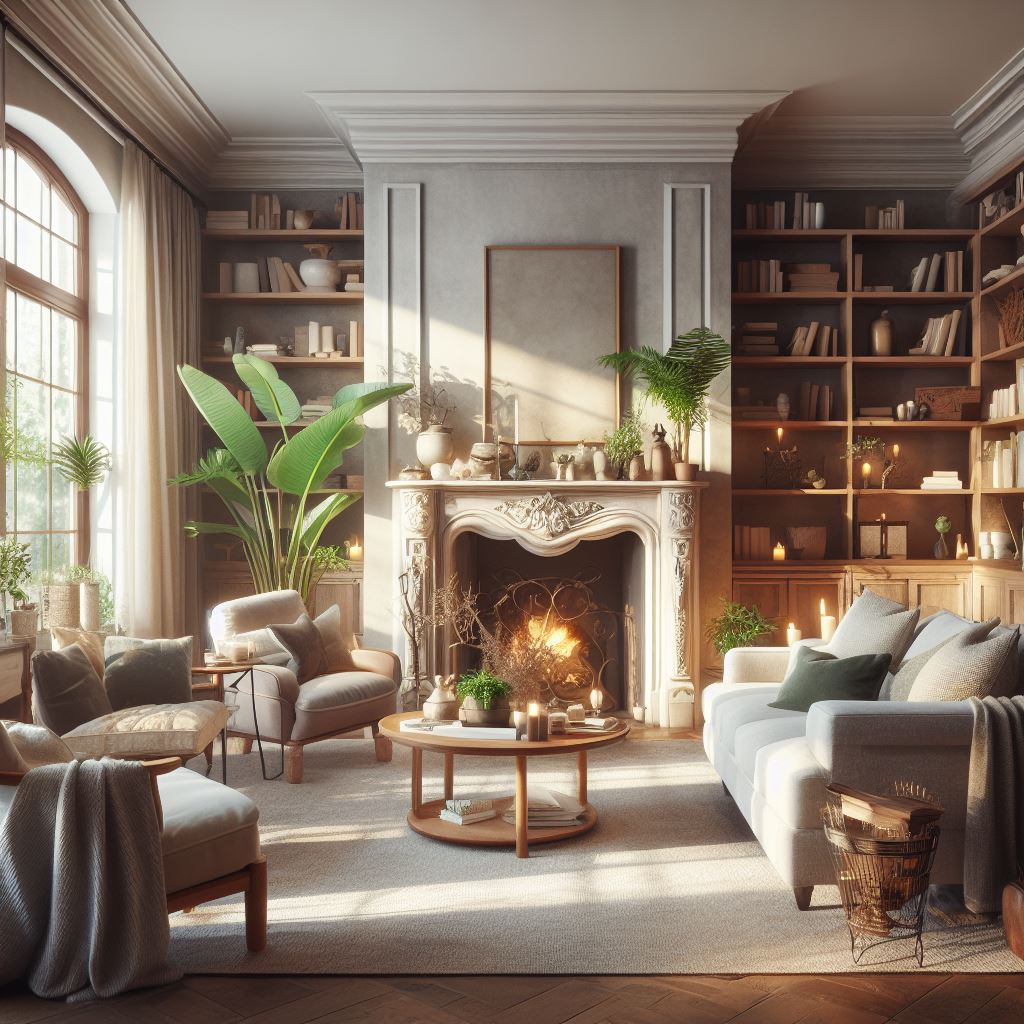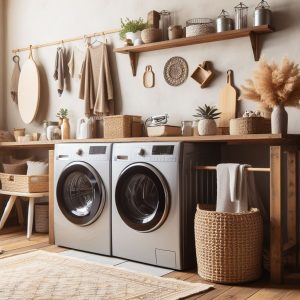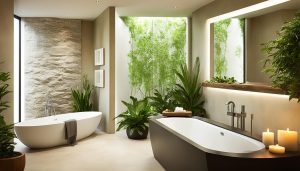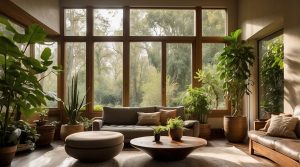Are you tired of walking into a room and feeling like something is missing? Creating a focal point in a room can transform the space from ordinary to extraordinary. Whether it’s a living room, bedroom, or even a dining room, having a focal point captures attention and adds a visual interest that is sure to impress. In this article, you’ll discover simple yet effective tips on how to create a focal point in any room, allowing you to create a captivating space that reflects your unique style and personality.
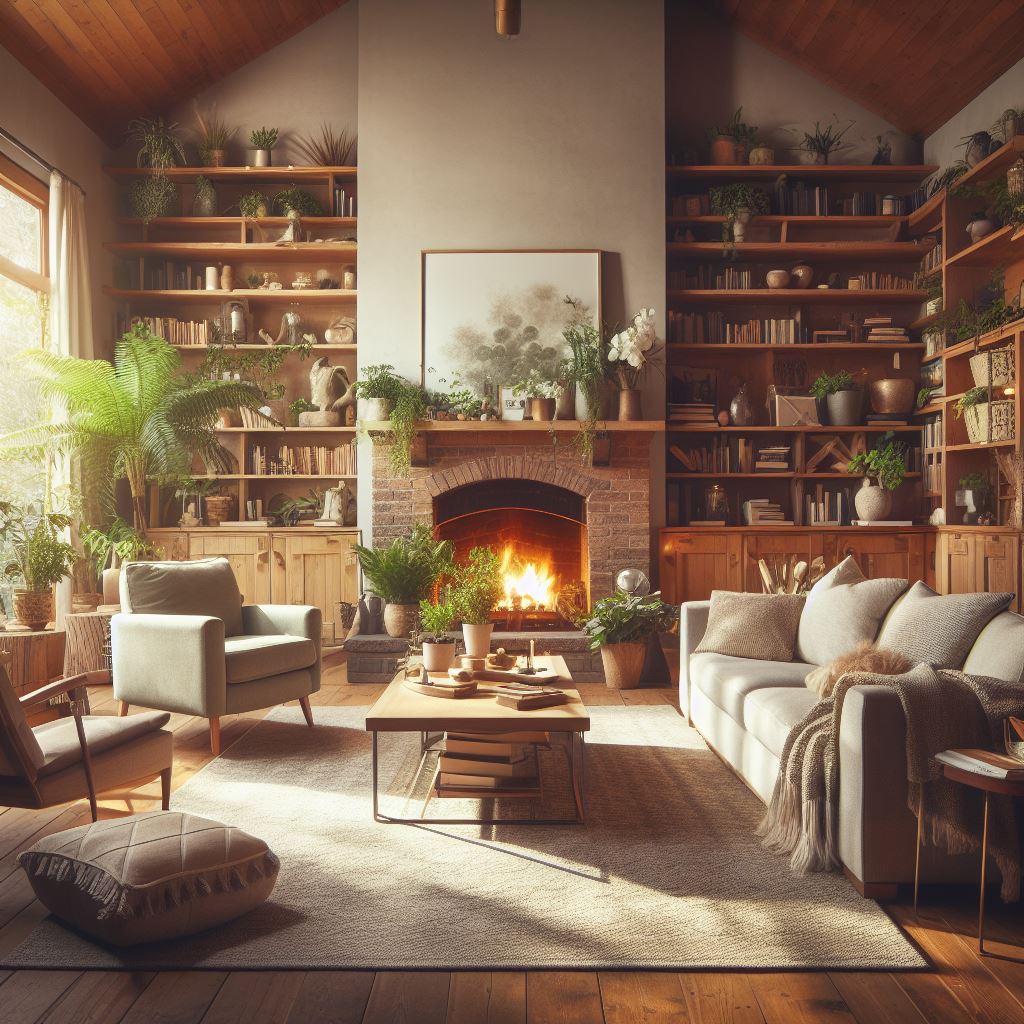
Choosing the Focal Point
Determining the Purpose of the Room
When designing or redecorating a room, it’s essential to consider the room’s purpose. Determine whether the room will be used for relaxation, entertainment, or work. This understanding will help you select a suitable focal point that aligns with the room’s function.
Evaluating Existing Architectural Features
Take a close look at the existing architectural features of the room. These features, such as a fireplace, large windows, or a picturesque view, can serve as natural focal points. Consider how you can enhance these features or incorporate them into your design to create a visually appealing focal point.
Selecting a Dominant Piece of Furniture
Another way to create a focal point is by choosing a dominant piece of furniture. This could be a stunning sofa, a grand dining table, or a statement piece like a unique coffee table. The furniture item should not only capture attention but also showcase the style and theme of the room.
Considering Natural Views
If your room has access to beautiful natural views, such as a garden or a scenic landscape, make the most of it by positioning the furniture to take advantage of these views. This not only creates a focal point but also connects the room to the outside world, bringing a sense of tranquility and harmony.
Arranging Furniture around the Focal Point
Placement of Larger Furniture Items
When arranging furniture around a focal point, start with the larger items. Place them strategically to direct attention towards the focal point. For example, if the focal point is a fireplace, arrange the seating furniture in a way that faces the fireplace, creating a cozy and inviting atmosphere.
Creating Functional Groupings
Consider the functionality of the room and create groupings based on activities or conversation areas. For instance, in a living room, arrange the furniture into a seating area for socializing, a reading nook with a comfortable chair and a side table for relaxation, and a media area with a TV and entertainment unit for watching movies.
Arranging Smaller Accent Pieces
Once the larger furniture is in place, add smaller accent pieces to further enhance the focal point. This could include decorative items like vases, sculptures, or table lamps. Ensure these accent pieces complement the style and theme of the room while drawing attention to the focal point.
Maintaining Proportion and Balance
While arranging furniture, it’s essential to maintain proportion and balance throughout the room. Avoid overcrowding one side of the room or placing disproportionately large or small furniture near the focal point. Achieving the right balance will create a harmonious and visually pleasing space.
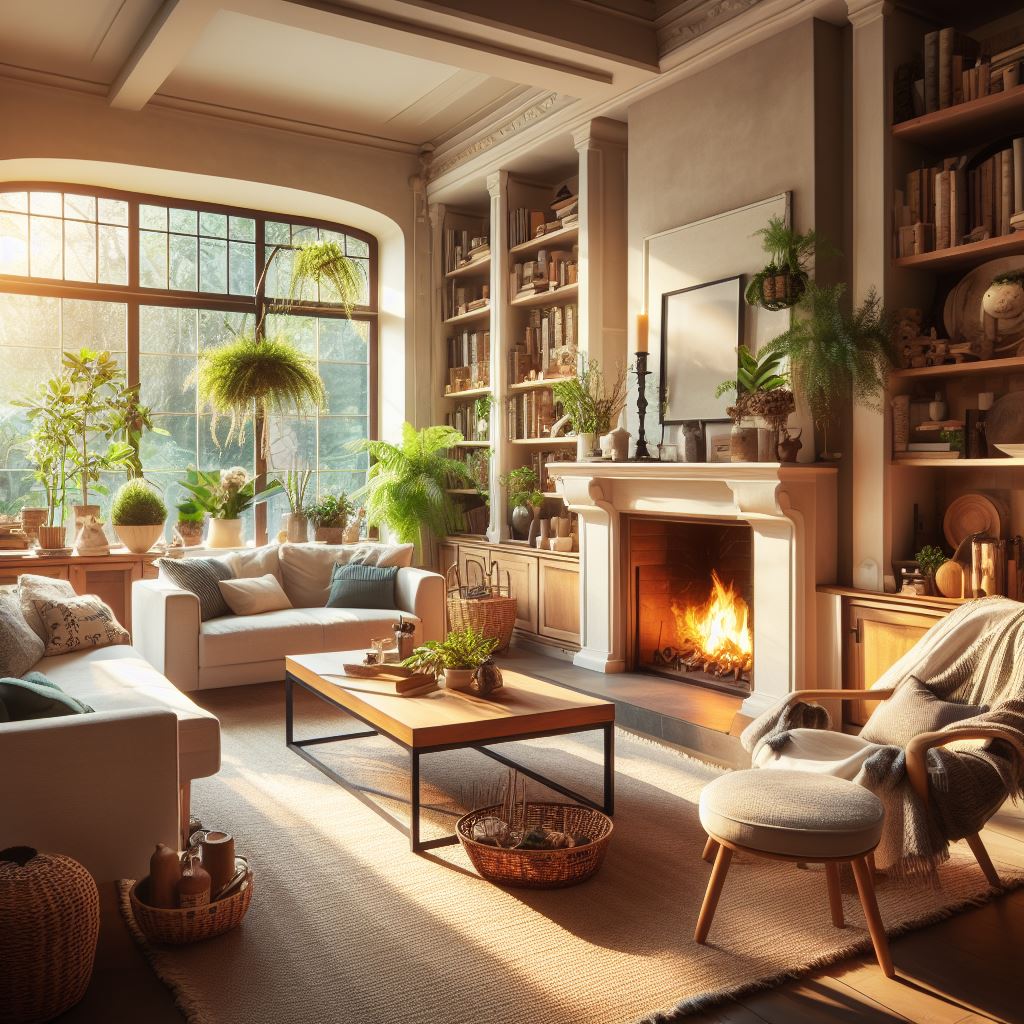
Enhancing the Focal Point with Color and Texture
Using Color to Draw Attention
Color plays a crucial role in drawing attention to the focal point. Choose a color palette that complements the focal point and the overall theme of the room. Consider using bold or contrasting colors to create a visual impact. For example, if the focal point is an elegant fireplace, use warm and rich tones to highlight its beauty.
Incorporating Patterns and Prints
Patterns and prints can add depth and visual interest to the focal point. Whether through wallpaper, curtains, or upholstery, select patterns and prints that enhance the focal point without overpowering it. Consider the scale and style of the patterns to ensure they harmonize with the room’s overall design.
Adding Texture and Contrast
Texture is another element that can enhance the focal point. Incorporate different textures through materials like fabrics, wood, metal, or stone. For example, if the focal point is a wooden bookshelf, contrast it with a plush, textured rug or velvet curtains to create a visually captivating space.
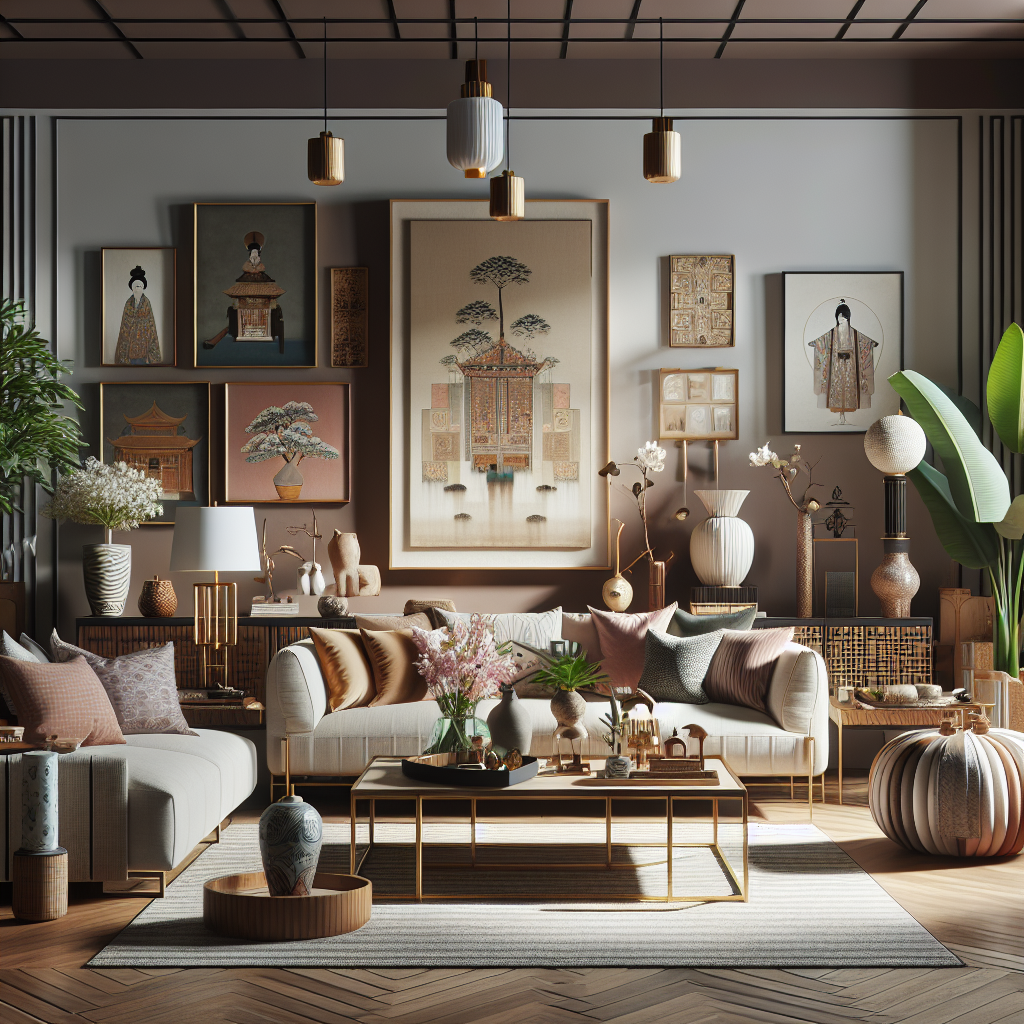
Lighting the Focal Point
Highlighting with Task Lighting
Proper lighting can significantly enhance the focal point. Consider using task lighting, such as table lamps or adjustable spotlights, to highlight specific features or objects. For example, if the focal point is a collection of artwork, install track lighting or wall sconces to accentuate each piece individually.
Installing Ambient Lighting
Ambient lighting creates a warm and inviting ambiance in the room. Use recessed lights or overhead fixtures to provide general illumination and complement the focal point. By ensuring overall brightness, the focal point will stand out and command attention even in a well-lit space.
Accentuating with Spotlights
Spotlights are ideal for highlighting a specific object or area within the focal point. For instance, in a dining room, install spotlights above the dining table to accentuate its beauty and create a pleasant, intimate atmosphere during meals. Experiment with different lighting angles to achieve the desired effect.
Using Natural Light
If the room has access to natural light, leverage it to enhance the focal point. Position furniture and accessories in a way that allows the natural light to shine on the focal point. This will not only illuminate the space but also create a seamless connection between the indoor and outdoor environment.
Accessorizing the Focal Point
Choosing Complementary Decorative Objects
When accessorizing the focal point, choose decorative objects that complement its style and theme. For example, if the focal point is a vintage-inspired fireplace, adorn the mantel with antique candle holders or vintage paintings. Select objects that enhance the focal point without overpowering it.
Adding Artwork and Wall Decorations
Artwork and wall decorations can enhance the focal point by creating an eye-catching backdrop. Choose pieces that relate to the focal point’s theme, such as nature-inspired artwork for a focal point with scenic views. Consider the size and scale of the artwork to ensure they complement the room’s proportions.
Incorporating Plants and Greenery
Plants and greenery can add freshness and life to the focal point. Place potted plants or a small indoor garden near the focal point to create a vibrant and inviting atmosphere. Choose plants that thrive in the room’s lighting conditions and require minimal maintenance.
Utilizing Mirrors to Reflect the Focal Point
Mirrors can be strategically placed to reflect and amplify the focal point, creating the illusion of a larger space. For example, if the focal point is a beautiful chandelier, position a large mirror on an adjacent wall to reflect the chandelier’s light and showcase its elegance from different angles.
Creating a Focal Point in Different Rooms
Living Room
In a living room, the focal point is often the entertainment center or the seating area. Arrange the furniture around the TV or fireplace, ensuring comfortable seating and minimal obstruction of the view. Use decorative objects and artwork to enhance the focal point while maintaining a cozy and inviting atmosphere.
Bedroom
The bed is typically the focal point in a bedroom. Position it against a wall or in the center of a room to create a sense of grandeur. Add accent lighting or decorative pillows to highlight the bed and make it visually appealing. Consider choosing a statement headboard or incorporating unique artwork above the bed.
Dining Room
In a dining room, the focal point is usually the dining table. Position the table in the center of the room and choose a statement chandelier or pendant light to draw attention to it. Surround the table with stylish chairs and place a decorative centerpiece or fresh flowers as a finishing touch.
Home Office
In a home office, the focal point is often the workspace. Arrange the desk in a way that maximizes natural light and faces a visually appealing view, if possible. Use organizational tools, such as shelving or corkboards, to enhance the focal point and create a functional and inspiring workspace.
The Psychology of Focal Points
Impact on Perception
Focal points have a significant impact on how we perceive and experience a room. They naturally draw our attention and guide our eyes through the space. By strategically designing and positioning a focal point, you can create a visual flow that enhances the overall aesthetic appeal of the room.
Creating Visual Hierarchy
Focal points help establish a visual hierarchy within a room. They give weight and importance to specific elements or areas, making them stand out from the rest of the space. This hierarchy enhances the overall design and creates a cohesive and balanced environment.
Enhancing the Atmosphere of a Room
Well-designed focal points can significantly impact the atmosphere of a room. They set the mood and evoke specific emotions. For example, a focal point with a fireplace can create a cozy and intimate ambiance, while a focal point with vibrant artwork can infuse energy and creativity into the space.
Increasing the Sense of Coziness
Focal points can also contribute to the sense of coziness and comfort in a room. By arranging furniture and accessories around a focal point, you create a sense of unity and warmth. The focus on a specific area promotes a feeling of intimacy and relaxation, making the room more inviting.
Common Mistakes to Avoid
Overcrowding the Focal Point
One common mistake is overcrowding the area around the focal point. While it’s important to enhance the focal point, overcrowding with too many decorative objects or furniture can lead to a cluttered and visually overwhelming space. Maintain a balance and give the focal point room to breathe.
Neglecting Other Areas of the Room
While the focal point is crucial, it shouldn’t overshadow the rest of the room. Neglecting other areas can create an imbalance in the overall design. Ensure that the other parts of the room receive adequate attention and decoration to maintain a harmonious and well-designed space.
Clashing Styles and Colors
When creating a focal point, it’s important to ensure that the chosen elements harmonize with the overall style and color scheme of the room. Avoid clashing styles or colors that detract from the focal point’s impact. Maintain consistency throughout the room for a visually appealing and cohesive design.
Choosing the Wrong Size or Scale
Selecting the wrong size or scale for the focal point can result in an unbalanced and disproportionate space. Consider the room’s dimensions and the surrounding elements when choosing the focal point. Ensure that it’s appropriately sized to create an impactful and visually pleasing aesthetic.
Maintaining and Evolving the Focal Point
Regular Cleaning and Maintenance
To keep the focal point looking its best, regular cleaning and maintenance are essential. Dust and clean objects or surfaces around the focal point to prevent dirt buildup or damage. Pay attention to any specific care instructions for materials like wood, metal, or fabric to ensure longevity.
Updating with Seasonal Decor
Refresh the focal point with seasonal decor to create a dynamic and ever-changing space. Use seasonal color palettes, such as warm tones in the fall or vibrant hues in the spring, to update the look and feel of the focal point. Switch out decorative objects or artwork to reflect the current season.
Refreshing the Focal Point Over Time
Over time, you may feel the need to refresh the focal point to keep the room looking fresh and engaging. Consider updating the dominant furniture piece, changing the color scheme, or incorporating new textures. This evolution ensures that the room remains relevant and reflects your evolving personal style.
Adapting to Changes in Personal Style
As your personal style evolves, it’s important to adapt the focal point to reflect these changes. If you find yourself drawn to a different aesthetic or color scheme, make adjustments to the focal point accordingly. This way, the room remains a true reflection of your taste and personality.
Conclusion
The Importance of a Focal Point
Creating a focal point in a room is essential to designing a visually appealing and engaging space. It draws attention, establishes visual hierarchy, and enhances the atmosphere of the room. By carefully selecting and arranging furniture, using color and texture, lighting strategically, and incorporating decorative objects, you can create a focal point that transforms any room into a stunning and well-designed environment.
Creating a Distinctive and Engaging Space
A well-designed focal point makes a space stand out and captures attention. It sets the tone for the room and creates a focal area that becomes the center of activity and conversation. By implementing the tips and techniques discussed in this article, you can create a distinctive and engaging space that reflects your personal style and enhances your enjoyment of the room.
Experiencing the Benefits of a Well-Designed Room
When a room has a well-designed focal point, it not only looks aesthetically pleasing but also promotes positive energy and functionality. A thoughtfully created focal point can improve the overall mood of the room, create a sense of comfort, and enhance your experience within the space. By investing time and effort into designing a focal point, you can transform any room into a space that inspires and delights.
Overall, creating a focal point is a creative and enjoyable process that allows you to showcase your personal style and design preferences. By following the outlined steps and taking into account the various elements, you can create a room that is visually striking, functional, and brings you joy for years to come.

